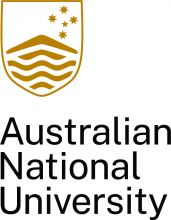The role of university education in Australia has changed dramatically over the past 50 years. While universities remain places for high-level intensive research in specialist academic fields, they have also become mass institutions of post-school education.
In 1971, 3 per cent of Australian men and only 1 per cent of Australian women held a bachelor’s degree or higher qualification. In 1991, these figures were 8 per cent and 7 per cent respectively. Fast forward to 2022 and one-third of all Australians aged 15 to 74 years now hold a bachelor’s degree qualification or higher. Among 25- to 34-year-olds, that figure rises to 37 per cent of men and 50 per cent of women. It is implausible to assume that such a large proportion of Australians all want the same education that a tiny, elite proportion wanted 30 years ago.
So, the question arises, how might higher education become more diverse, to better serve its diverse clientele, without losing what is irreducibly special about it? There are two key sets of constraints: the way higher education is regulated and the way businesses are funded. In a paper we recently co-wrote, we looked deeply at both. With a new government in place, the time is now ripe to reappraise where the sector positions itself going forward.
Australian universities are shaped by regulations that define them, the Higher Education Provider Category Standards. These have been reviewed recently by Peter Coaldrake, chief commissioner of the higher education regulator the Tertiary Education Quality and Standards Agency (Teqsa). He reaffirmed the definition of a university as an institution that performs world-class research in a number of disciplines, notwithstanding that some universities find this requirement practically challenging.
Coaldrake’s conclusion reflects the importance of research from all universities in contributing to communities and local economies and the undesirability of further concentration of research funding among the Group of Eight research-intensive universities. However, his review also recommended conferring a more esteemed status, “university colleges”, on high-quality non-universities. Recent entries to this category include the National Institute of Dramatic Arts and the Australian Film, Television and Radio School.
This levelling of the playing field in tertiary education needs to go further. Non-university providers, of which Australia has many, are disadvantaged in the funding system and their students pay a 20 per cent premium on their student loans compared with university students. They also face additional course approval requirements and other regulatory burdens, all of which is anticompetitive and restricts student choice.
The Australian higher education funding system is also based on the reality of massive cross-subsidisation within university budgets. We know of one vice-chancellor of an important Australian metropolitan university who would love his university to focus on being a great health and health sciences university, but such specialisation in an expensive group of disciplines is completely unrealistic in the current funding system.
Another sector leader that we spoke to has seriously pursued the creation of a top-tier liberal arts college in Australia but found that it would not have been registrable within the category standards then prevailing. Following the Coaldrake Review, a liberal arts college might fit the university college category – and the financing of such a venture might be more achievable than that of a science-heavy specialist university.
We might also want to consider whether universities could be permitted some limited fee flexibility to allow high-quality specialist institutes to derive some additional fee revenue. This would be more limited than any general fee limit changes, given the debates in Australia over “deregulation” in the past decade. But anyone inclined to dismiss such an idea out of hand ought to consider that fees are already largely unregulated across the non-university higher education sector.
Similarly, we might want to consider making more use of the provisions in the regulations for recognition of research important to Australia. Less research-intensive universities across metropolitan and regional Australia nevertheless make huge contributions to their local communities, economies and ecologies through their research. Australia needs those contributions, especially at this time of climate stress and social and economic change. With the affirmation of world-class research in multiple disciplines as core to the definition of universities, it is imperative for Teqsa to be clear how it reads this provision about nationally important research to ensure continued diversity in research impact.
Finally, both the Australian and state governments have commissioned reports on overcoming the historical separation of technical and higher education qualifications to genuinely equip Australian workers and businesses for the changing technologies, economies and markets we all face. One of the innovative ventures arising from this work is the Institute of Applied Technology Meadowbank Precinct, a collaboration between Microsoft, the University of Technology Sydney and Macquarie University, which followed a review for NSW government by senior duo Peter Shergold and David Gonski. Recent work by Peter Dawkins and the late Peter Noonan underlines the point – changing universities requires that we think well beyond their boundaries.
The bottom line is that Australia and Australian students would be better served by some modest but important reforms to ensure that higher education offers more innovation, specialisation and local and regional focus. A sector that now educates half of young Australians needs a diversity of models and strengths – not just the one comprehensive model of the university that was available to a small minority of their parents.
Robert Griew is a consultant and a former civil servant. Ian Anderson is deputy vice-chancellor (student and university experience) at the Australian National University.
Register to continue
Why register?
- Registration is free and only takes a moment
- Once registered, you can read 3 articles a month
- Sign up for our newsletter
Subscribe
Or subscribe for unlimited access to:
- Unlimited access to news, views, insights & reviews
- Digital editions
- Digital access to THE’s university and college rankings analysis
Already registered or a current subscriber? Login










